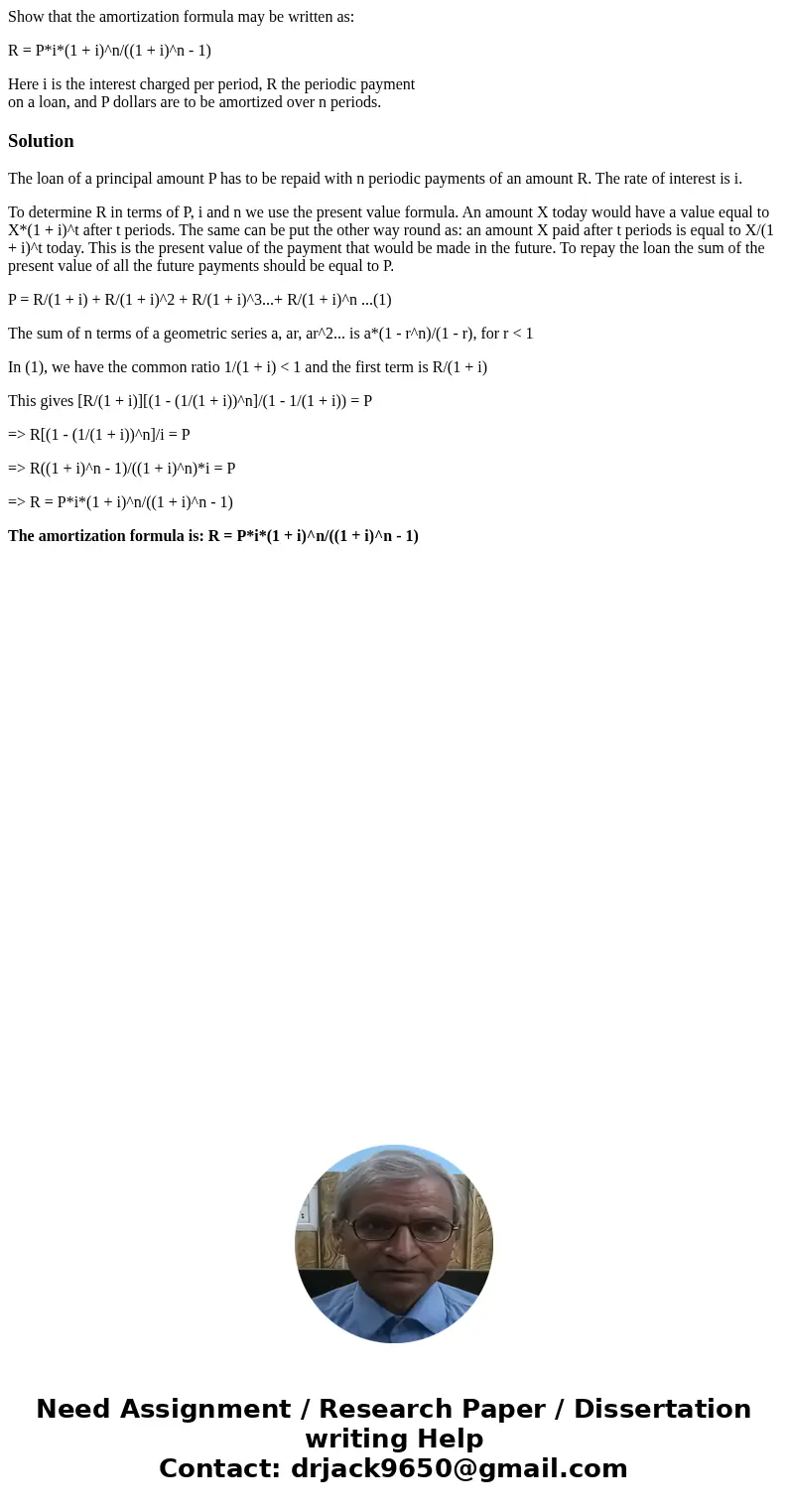Show that the amortization formula may be written as R Pi1
Show that the amortization formula may be written as:
R = P*i*(1 + i)^n/((1 + i)^n - 1)
Here i is the interest charged per period, R the periodic payment
on a loan, and P dollars are to be amortized over n periods.
Solution
The loan of a principal amount P has to be repaid with n periodic payments of an amount R. The rate of interest is i.
To determine R in terms of P, i and n we use the present value formula. An amount X today would have a value equal to X*(1 + i)^t after t periods. The same can be put the other way round as: an amount X paid after t periods is equal to X/(1 + i)^t today. This is the present value of the payment that would be made in the future. To repay the loan the sum of the present value of all the future payments should be equal to P.
P = R/(1 + i) + R/(1 + i)^2 + R/(1 + i)^3...+ R/(1 + i)^n ...(1)
The sum of n terms of a geometric series a, ar, ar^2... is a*(1 - r^n)/(1 - r), for r < 1
In (1), we have the common ratio 1/(1 + i) < 1 and the first term is R/(1 + i)
This gives [R/(1 + i)][(1 - (1/(1 + i))^n]/(1 - 1/(1 + i)) = P
=> R[(1 - (1/(1 + i))^n]/i = P
=> R((1 + i)^n - 1)/((1 + i)^n)*i = P
=> R = P*i*(1 + i)^n/((1 + i)^n - 1)
The amortization formula is: R = P*i*(1 + i)^n/((1 + i)^n - 1)

 Homework Sourse
Homework Sourse